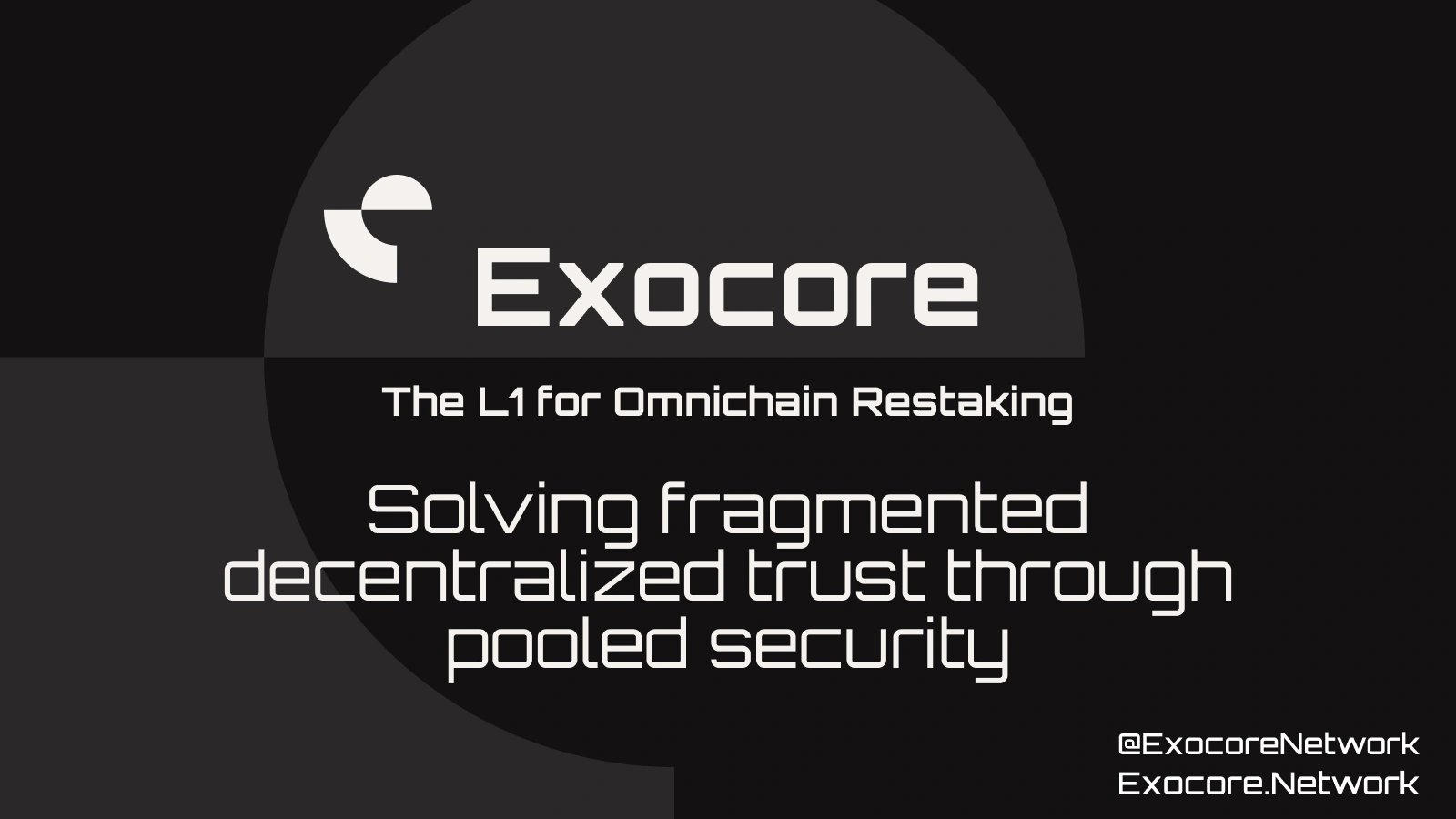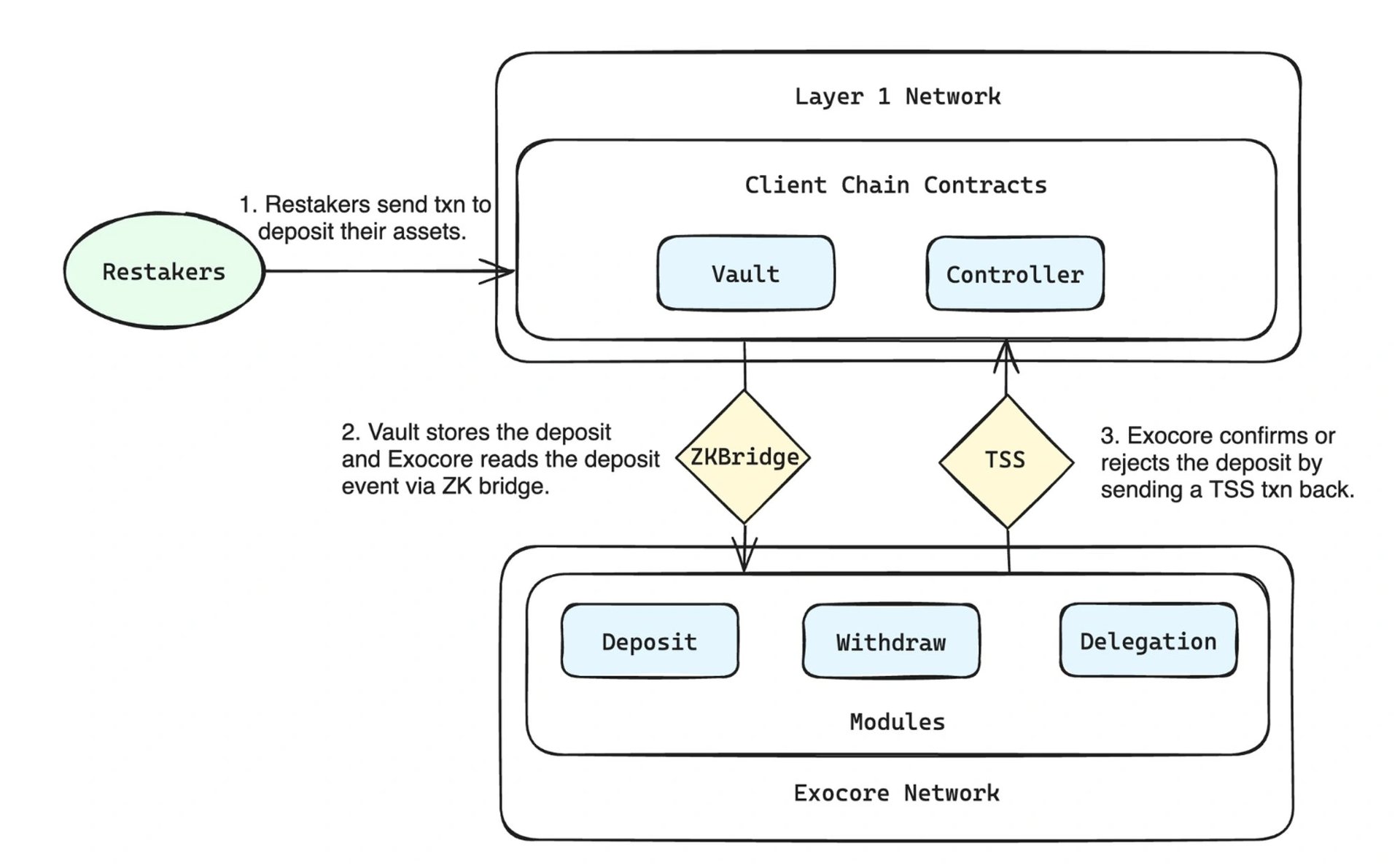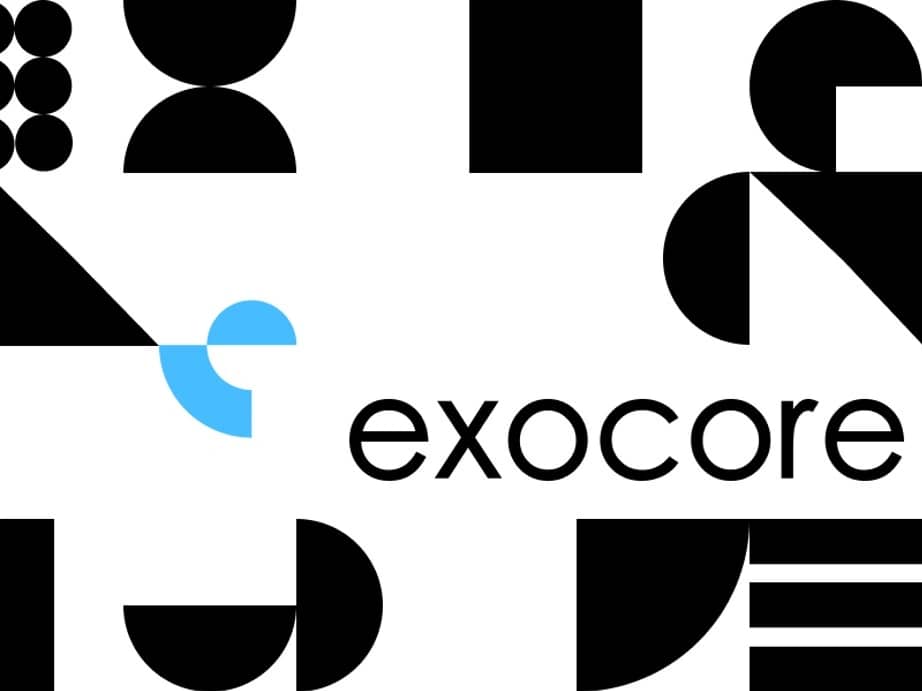위키 구독하기
Share wiki
Bookmark
Exocore
Exocore
Exocore는 Tendermint 기반의 비잔틴 장애 허용(BFT) 합의, Zero-Knowledge (ZK) 라이트 클라이언트 브리징 및 완전한 EVM 호환 실행 환경을 갖춘 최초의 계층 1 옴니체인 리스테이킹 프로토콜입니다. 이는 블록체인 상호 운용성과 보안을 향상시키기 위한 것입니다.[1][2]
개요
Warren Anderson, Raluca Popa 및 RJ Lan이 2023년에 설립한 Exocore는 최초의 계층 1 옴니체인 리스테이킹 프로토콜입니다. Tendermint 기반의 비잔틴 장애 허용(BFT) 합의 메커니즘, Zero-Knowledge (ZK) 라이트 클라이언트 브리징 및 완전한 EVM 호환 실행 환경을 갖춘 모듈식 아키텍처를 통합합니다.
이 설계는 리스테이커를 위한 효율적인 상호 작용, 개발자를 위한 원활한 통합 및 Proof-of-Stake 네트워크의 리스테이크된 validator 운영자에 의해 지원되는 분산형 거버넌스 프레임워크를 용이하게 하는 것을 목표로 합니다. 이러한 운영자는 적극적으로 검증된 서비스(AVS)에 대한 노드를 실행할 수도 있습니다.
Exocore는 오프체인 서비스가 유니온을 형성하고 토큰의 암호 경제적 보안을 서로 확장할 수 있는 유니온 리스테이킹이라는 개념을 도입합니다. 암호 경제적 보안을 오프체인 시스템으로 풀링 및 확장함으로써 Exocore는 분산된 신뢰를 위한 개방형 시장을 지원하고자 합니다.[1][2][3][4]

제품
Exocore 리스테이킹
Exocore는 토큰을 적극적으로 검증된 서비스(AVS)에 리스테이킹하여 "풀링된 보안"이라는 모델을 통해 오프체인 서비스로 분산된 보안을 확장합니다.
리스테이크된 Proof-of-Stake(rPOS)를 활용하여 Exocore는 네이티브 토큰에만 의존하지 않고 외부 토큰으로 네트워크를 초기화할 수 있습니다. 이 프로토콜은 계층 1 및 계층 2 토큰, Liquid Staking 토큰 및 stablecoins을 포함한 다양한 자산을 지원합니다. Exocore는 신뢰할 수 없는 브리징 메커니즘을 통해 블록체인에 연결하고 안전한 검증을 위해 Zero-Knowledge 라이트 클라이언트를 사용합니다.
AVS는 스마트 계약 또는 네이티브 모듈을 통해 통합할 수 있으며, 후자는 커뮤니티 거버넌스 승인이 필요합니다. 또한 Exocore는 AVS가 추가 비용 없이 개선된 보안을 위해 누적 스테이크를 활용할 수 있는 "유니온 리스테이킹"을 도입합니다.[5]
리스테이킹 메커니즘
Exocore의 리스테이킹 메커니즘은 rPOS를 통해 작동하며 여러 필수 단계가 포함됩니다. 클라이언트 체인 계약은 지원되는 계층 1 네트워크에 배포되고, 이러한 계약 내에서 제네시스 검증자가 등록됩니다. 스테이커는 이러한 검증자를 통해 토큰을 사전 스테이킹하고, 검증자는 초기 위원회를 구성하고 스테이크를 설정합니다.
옴니체인 플랫폼으로서 Exocore는 네이티브 토큰과 리퀴드 스테이킹 토큰을 포함한 다양한 토큰 유형을 스테이킹하기 위해 지원하는 것을 목표로 합니다. 각 AVS는 허용되는 토큰을 지정하며, 이는 운영자의 투표권 결정에 영향을 미칠 수 있습니다.
투표권은 주기적인 평가를 제공하는 가격 oracle을 사용하여 리스테이크된 토큰의 실제 가치를 기반으로 계산됩니다. Exocore는 또한 유니온 리스테이킹을 도입하여 AVS가 구성원 간에 보안을 풀링하여 비용을 크게 증가시키지 않고 네트워크 강력함을 향상시킬 수 있도록 합니다.[10]
아키텍처
네트워크
Exocore 프로토콜은 Exocore 네트워크, 단방향 상태 페그(신뢰할 수 없는 ZK 브리지) 및 클라이언트 체인 계약의 세 가지 구성 요소로 구성됩니다. Exocore 네트워크는 리스테이커, 운영자 및 적극적으로 검증된 서비스(AVS) 간의 상호 작용을 조정하는 것을 목표로 하는 반면, 클라이언트 체인 계약은 예금 및 인출과 같은 작업을 용이하게 합니다.
이 네트워크는 운영자 및 AVS의 등록을 관리하고 신뢰할 수 없는 상태 페그를 통해 클라이언트 체인과 통신합니다. Tendermint BFT 합의를 사용하는 EVM 호환 블록체인에 구축된 Exocore는 네이티브 모듈을 통한 통합을 지원하고자 합니다.
즉각적인 최종성은 안정적인 크로스체인 통신을 보장하는 것을 목표로 하며, Ethereum Virtual Machine (EVM)의 사용은 다양한 온체인 프로그래밍 요구 사항을 해결합니다.[6]

모듈
Exocore 네트워크는 핵심 리스테이킹 기능을 구현하는 여러 모듈로 구성됩니다.
- 예금 및 인출: 스테이크된 토큰의 예금 및 인출을 관리하고, 필요에 따라 거래를 검증하고 토큰을 해제합니다.
- 운영자 및 AVS: 운영자 및 AVS의 등록 및 업데이트를 처리하고 정확한 기록을 유지합니다.
- 위임: 위임된 토큰을 운영자와 연결하고, 요청을 검증하고 투표권 계산을 위한 데이터를 제공합니다.
- 보상: 운영자와 위임자에 대한 보상 분배를 감독하며, 쉬운 구현을 위한 템플릿을 제공합니다.
- 슬래싱: 슬래싱 규칙을 관리하고 악의적인 행위를 검증하며, 필요에 따라 슬래싱 작업을 실행합니다.[7]
잘못된 내용이 있나요?
